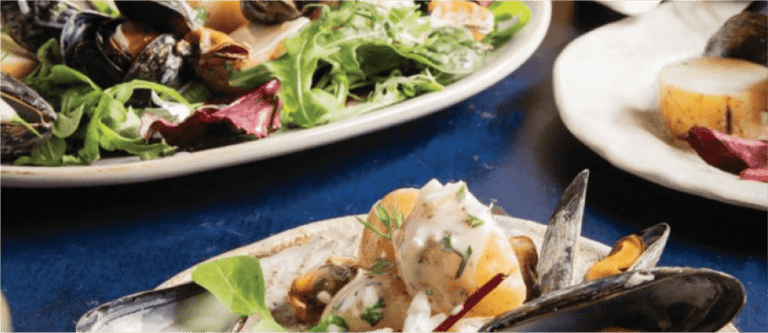
Irish Cheddar Cheese Toastie with Homemade Tomato Soup
There’s no better comfort food than an ooey-gooey cheesy toastie. Whether you’re whipping up a quick lunch or late night snack, you can rely on

There’s no better comfort food than an ooey-gooey cheesy toastie. Whether you’re whipping up a quick lunch or late night snack, you can rely on

Lorem ipsum dolor sit amet, consectetur adipiscing elit. Cras porta lorem cras justo, sed justo, ut eu. Arcu.
Check out OUR Latest FAVOURITE Recipe
Milk, yogurt and cheese are established as nutrient-rich foods to be included as part of a healthy, balanced diet. However, misinformation can cause confusion and, worryingly, some people may compromise their nutritional intakes by excluding or limiting important food groups based on inaccurate information.
In our booklet ‘Common Dairy Myths‘, we dispel some of the most common myths about dairy.
In Ireland and the European Union, there is a total ban on the use of hormones for milk stimulation or growth promotion in farm animals, including dairy cows.
With regard to the dairy industry in Ireland, Irish cows are considered to experience high standards of animal welfare.
There is strict regulation around the antibiotic types that are permitted for use in food-producing animals. These are only authorised under veterinary prescription.
Pasteurisation is an important and well-established food safety measure, which is practiced globally. It is a simple heating process which involves heating milk to a specified temperature and time period (e.g. 72°C for 15 seconds) in order to destroy any harmful micro-organisms.
An excess of sinus-related mucus production is a symptom that is more commonly associated with air-borne allergies such as dust, pollen and animal dander.
Eczema results primarily from a defect in the skin barrier and can have various causes such as genetics, immune function and environmental irritants. It often presents in early life when the immune system is immature.
Many factors influence the development of cancer, including our genetics, the environment and various lifestyle choices.
The inclusion of dairy foods as part of a bone-friendly lifestyle is actively promoted by leading osteoporosis authorities both nationally and internationally.
Lactose intolerance can occur in individuals who have low levels of the enzyme lactase, which is needed to digest the naturally occurring milk sugar (lactose).
Milk allergy, like all allergies, is the immune system’s abnormal reaction to a protein, in this case a milk protein. It is most common in early childhood, affecting about 2-3% of young children.
Dairy alternative drinks are generally composed of water and ingredients such as soya, rice, almond, oat, coconut, hazelnut or hemp.
Milk, yogurt and cheese are well known as important sources of calcium, but these foods are natural sources of many other nutrients too.
Although the intake of saturated fat has previously been associated with increased cholesterol levels, research does not support that dairy intake has an adverse effect on cholesterol or other markers of cardiovascular disease. Not all saturated fats are the same and the food or overall diet in which they are consumed is important when it comes to health effects.
Foods with a high calorie or fat content are often referred to as being ‘fattening’. However, individual foods should not be categorised as fattening without taking into consideration how much of the food is consumed and what the overall diet is composed of. As weight gain is directly linked to an over-consumption of calories, portion size and how frequently it is eaten is what really determines if a food is fattening.
Throughout evolution, humans have made many discoveries and innovations which have altered our ability to preserve food or enhance food safety and nutritional intake. Examples include marinating, pickling and cooking.
Access to food for any animal is determined by its ability and intellect. Humans are a unique species and have many culinary practices that would be unusual for other animals, such as preparing and cooking meals.
In Ireland and the European Union, there is a total ban on the use of hormones for milk stimulation or growth promotion in farm animals, including dairy cows.
With regard to the dairy industry in Ireland, Irish cows are considered to experience high standards of animal welfare.
There is strict regulation around the antibiotic types that are permitted for use in food-producing animals. These are only authorised under veterinary prescription.
Pasteurisation is an important and well-established food safety measure, which is practiced globally. It is a simple heating process which involves heating milk to a specified temperature and time period (e.g. 72°C for 15 seconds) in order to destroy any harmful micro-organisms.
An excess of sinus-related mucus production is a symptom that is more commonly associated with air-borne allergies such as dust, pollen and animal dander.
Eczema results primarily from a defect in the skin barrier and can have various causes such as genetics, immune function and environmental irritants. It often presents in early life when the immune system is immature.
Many factors influence the development of cancer, including our genetics, the environment and various lifestyle choices.
The inclusion of dairy foods as part of a bone-friendly lifestyle is actively promoted by leading osteoporosis authorities both nationally and internationally.
Lactose intolerance can occur in individuals who have low levels of the enzyme lactase, which is needed to digest the naturally occurring milk sugar (lactose).
Milk allergy, like all allergies, is the immune system’s abnormal reaction to a protein, in this case a milk protein. It is most common in early childhood, affecting about 2-3% of young children.
Dairy alternative drinks are generally composed of water and ingredients such as soya, rice, almond, oat, coconut, hazelnut or hemp.
Milk, yogurt and cheese are well known as important sources of calcium, but these foods are natural sources of many other nutrients too.
Although the intake of saturated fat has previously been associated with increased cholesterol levels, research does not support that dairy intake has an adverse effect on cholesterol or other markers of cardiovascular disease. Not all saturated fats are the same and the food or overall diet in which they are consumed is important when it comes to health effects.
Foods with a high calorie or fat content are often referred to as being ‘fattening’. However, individual foods should not be categorised as fattening without taking into consideration how much of the food is consumed and what the overall diet is composed of. As weight gain is directly linked to an over-consumption of calories, portion size and how frequently it is eaten is what really determines if a food is fattening.
Throughout evolution, humans have made many discoveries and innovations which have altered our ability to preserve food or enhance food safety and nutritional intake. Examples include marinating, pickling and cooking.
Access to food for any animal is determined by its ability and intellect. Humans are a unique species and have many culinary practices that would be unusual for other animals, such as preparing and cooking meals.